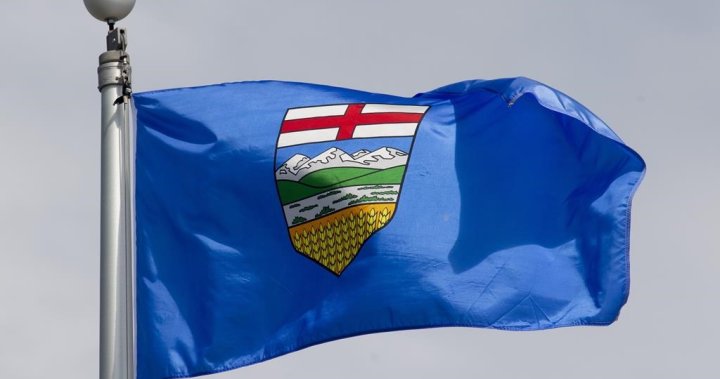A recent poll asking Albertans about issues related to Premier Danielle Smith’s proposed gender identity and education policies show opinions in the province are split.
Leger, a research and analytics company, self-commissioned the online survey of 1,002 Albertans as part of a larger national survey conducted between Feb. 9 and 12.
Andrew Enns, executive vice president for Leger in central Canada, said one theme stood out for him in the polling: the involvement of parents in decisions around transitioning gender.
“A lot more of the population comes along in a general direction of policies in this area when parents are involved,” Enns said.
Lisa Young, University of Calgary political science professor, said the results didn’t surprise her.
“What we’ve seen in public opinion in Alberta and in the rest of Canada, there’s if not a majority then at least a plurality of people who are surveyed who are not terribly supportive of a very liberal approach to gender-affirming care,” Young said.
When asked about gender reassignment surgeries, 44 per cent of respondents said all such surgeries should be banned for minors. Nearly the same amount of respondents said they could be permitted on a case-by-case basis, with 35 per cent of those polled saying the surgeries should involve parental consent and 10 per cent said parental consent should not be required.
Currently in Canada, no “bottom” surgeries are allowed for patients under 18.
Alberta’s proposed policy would block all gender-affirming surgeries until legal adulthood, in the name of “preserving choice” for transitioning children.
Leger asked about opinions on access to puberty blockers and hormone therapy for two different age groups: 15 or younger and “mature teens” — aged 16 or 17 — in the same way the proposed policies split the ages.
For teens 15 and under, 44 per cent of Albertans polled said those treatments should not be allowed. For youth 17 and under, that number changes to 34 per cent.
Get the latest National news.
Sent to your email, every day.
For those supporting the use of those treatments on a case-by-case basis for under-15s, 29 per cent said they should be accessible with parental consent and for 12 per cent, parental consent wasn’t needed.
In a poll question about the hypothetical use by mature teens, 53 per cent supported the use of puberty blockers and hormone therapies with the approval of an attending physician and psychologist, with 28 per cent saying parental approval should be required.
“I think it’s interesting that the population picks up on maybe the blanket approach for those in that age group isn’t necessarily the best approach for children going through (gender transition),” Enns said.
The proposed policies would block access to puberty blockers and hormone therapies for children under 15, and allow mature teens access with parental, physician and psychologist approval.
Multiple doctors with trans patients have told Global News that restricting puberty blockers until after puberty renders the reversible and potentially quality-of-life-improving treatments moot.
Nearly two-thirds of respondents said parents “must be notified” when there’s formal instruction on gender, sexual orientation or human sexuality, but opinions were nearly split on whether parents should have to opt-in, as the new policies propose, or opt-out, as is the current practice.
More than one-in-five respondents – 23 per cent – said parents don’t need to be notified about topics related to gender, sexual orientation or human sexuality in schools, and 13 per cent said they don’t know.
“I think if there was just a little bit more effort to bring parents into the conversation, I think some of the controversy around this topic dissipates a little bit,” the pollster said.
The pollster said the survey results showed there is something of a “middle ground” in the proposed policies “that might be good places for the conversation… and hopefully lead to some good, positive policies in this area.”
One question that was not as closely divided was when Albertans polled were asked “Do you believe transgender athletes who were born as males should be allowed to compete in women’s sports and athletics?” Two-thirds said no, 15 per cent said yes and 18 per cent said they don’t know.
The poll showed the Alberta results closely mirrored the rest of the country, and Enns said there wasn’t large regional differences in opinion about the policies as proposed. He noted that’s not always the case.
But the pollster did says there was a generational difference, with respondents aged 18 to 34 favouring a more independent approach for youth in transition.
Enns said there was a predictable urban-rural split, as well as a divide in opinion between respondents who support the UCP or NDP.
Young said those differences followed “fairly predictable patterns” for the divisive issue.
“The one thing that public opinion surveys can’t tell us when they give us these top line results is the intensity of opinion. For smaller groups in the population on both sides of the issue, there are intense opinions, either in favour of parental rights or in favour of trans rights,” the political scientist said. “The difficulty here is in balancing those strongly held views, especially by those who are most immediately affected by it.”
Young noted that one of the fundamental questions in a liberal democracy was to what extent public opinion should weigh on individual and minority rights.
“This is a case where it’s going to be very important for the government to weigh, on the one hand, public opinion, but on the other hand, the decisions of courts, the guarantees that are set out in the Charter and what they mean in this particular context,” she said.
Leger’s online poll queried 2,439 Canadians aged 18 or older, including 1,002 Albertans. For comparison purposes, a probability sample of the national size yields a margin of error no greater than +/- 1.98 per cent, 19 times out of 20, and less than +/- 3.1 per cent, 19 times out of 20, for the Alberta sample.


